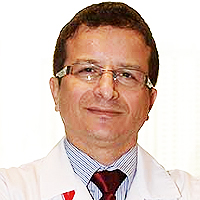Comparison of Body Fat Percentage and BMI in Pre-hypertensive and Hypertensive Female College Students of West Tripura
Published on: 3rd April, 2025
Background: Obesity is a significant health risk linked to hypertension and heart-related disorders in adolescents, impacting their future well-being . Since, the present work is to determine the body constitute including percentage of body fat correlates with cholesterol level which associate with Body Mass Index. Methods: This cross-sectional work was held in 120 college girls aged 19-23 years of Bhavan’s Tripura College of Science and Technology, Anandanagar at West Tripura. Anthropometric measurements such as standing height, body weight, sub scapular and triceps skinfolds, waist &hip circumference were collected. These records were used to calculate Body Fat Percentage (%BF) and Fat Mass (FM). Waist and Hip ratio (WHR) and Body Mass Index (BMI). FM, %BF and biochemical studies such as serum cholesterol level were also used to measures the body fat composition. Results: According to the present study, 53.33% of girls have a normal BMI, 8.83% are underweight, 31.67% are overweight, and 6.67% are obese. WHR results indicate that 54.17% of participants are classified as obese and 45.83% as non-obese. Out of 114 (95%) girls with normal cholesterol levels of 16 (13.33%) students are pre-hypertensive and 10 (8.33%) students are hypertensive. Out of 38 overweight and 8 obese students 13.34% are in pre or hypertensive. Based on WHR, 65 (54.17%) female students are obese; out of 65 obese students, 12 (10%) and 7 (5.83%) female students are pre-hypertensive and hypertensive, respectively and this value is statistically significant (p value < 0.05). Out of 55 (45.83%) no-obese students 8 (6.67%) girls are pre-hypertensive and 5 (6.67%) girls are hypertensive. According to BMI female students who are overweight or obese (5%) also have excessive blood cholesterol.Conclusion: This study expressed clear evidence of correlation in BMI, serum cholesterol level and Hypertension. These results are important for epidemiological studies to identify the cardiovascular risk in obese adults and help to solve a health problem of present Youngers in their future life. This study serves as an early health warning for female college students.
Anesthetic Management of a Patient with Left Ventricular Thrombus Posted for Emergency Laparotomy
Published on: 2nd April, 2025
Left ventricular thrombus (LVT) is a life threatening complication following acute coronary syndromes but in modern era its incidence has reduced since the introduction of primary percutaneous intervention. LVT is associated with higher morbidity and mortality due to its thromboembolic events and major adverse cardiac events (MACE). This is a case report of 30-year-old male who presented with acute abdomen and left ventricular thrombus. CECT abdomen revealed superior mesenteric artery (SMA) thrombosis and echocardiography revealed severe ventricular dysfunction (ejection fraction, EF<30%) with global hypokinesia and LVT. SMA thrombosis is fatal and if left unattended can lead to intestinal ischemia and gangrene, hence immediate intervention is warranted. This patient had undergone emergency laparotomy under general anesthesia for the resection of gangrenous jejunal segment with mucous fistula . This case report discusses perioperative management considerations in such cases.
Dengue Epidemic during COVID-19 Pandemic: Clinical and Molecular Characterization – A Study from Western Rajasthan
Published on: 1st April, 2025
The concurrent emergence of dengue fever and the COVID-19 pandemic posed significant challenges to India’s healthcare system, particularly in Western Rajasthan, a region characterized by its arid climate and unique socio-demographic conditions. This study aimed to investigate the clinical and molecular characteristics of dengue during the COVID-19 pandemic, focusing on trends, diagnostic challenges, and serotype distribution. Conducted at Dr. S.N. Medical College, Jodhpur, in 2021, the study included 550 dengue-positive patients confirmed via rapid diagnostic tests and further analyzed using Dengue NS1 antigen and IgM antibody ELISA. Molecular characterization was performed using RT-PCR for serotyping.The results revealed a male predominance (72.36%) and a higher incidence in the 21–30-year age group (39.09%). Urban areas accounted for 67.73% of cases, with significant NS1 and IgM positivity (p = 0.042 and p = 0.004, respectively). Most cases (86.91%) were managed outpatient, though IgM positivity was significantly higher among hospitalized patients (19.19%, p < 0.001), indicating severe or prolonged infections. Platelet counts were above 100,000/mm³ in 86.91% of cases, with only 0.37% showing critically low counts (< 20,000/mm³). Seasonal analysis showed a peak in October (n = 325), correlating with post-monsoon vector breeding. Serotyping identified DENV2 as the dominant strain (97.42%), associated with severe dengue manifestations, including Dengue Haemorrhagic Fever (DHF).The study highlights the dual burden of dengue and COVID-19, emphasizing the need for enhanced vector control, improved diagnostic strategies and public health interventions during overlapping outbreaks. The predominance of DENV2 underscores the importance of serotype-specific surveillance and preparedness to mitigate future dengue epidemics in the region.
Green Synthesis of Citrus sinensis Peel (Orange Peel) Extract Silver Nanoparticle and its Various Pharmacological Activities
Published on: 28th March, 2025
Citrus sinensis is a rich source of bioactive compounds and has attracted attention due to its medicinal benefits. Historically regarded as agricultural waste, orange peel is rich in flavonoids, polyphenols, tannins, and essential oils with antibacterial, anti-inflammatory, and antioxidant qualities. The phytochemicals in Citrus sinensis peel were used as natural reducing and stabilizing agents in the green synthesis method used in this work to create silver nanoparticles (AgNPs). This method is an environmentally friendly alternative to conventional nanoparticle production, eliminating the need for hazardous chemicals. Based on the study’s results, green-synthesized silver nanoparticles derived from Citrus sinensis peel extract offer a sustainable and biocompatible substitute for biomedical applications. The pharmaceutical and healthcare industries may find therapeutic uses for them due to their exceptional antibacterial, antioxidant, and anticancer properties.
Reduced Pain Scores during Indocyanine Green Lymphography by using a Different Preparation Formula
Published on: 1st April, 2025
Purpose: The purpose of this study was to investigate whether a different indocyanine green lymphography formula can reduce the severe pain encountered during this investigation.Methods: Indocyanine green ICG lymphography frequently induces severe and intolerable pain in patients. It is very important to develop a relatively painless lymphography method. This helps reduce patients’ apprehension during examination. Our center conducted randomized control groups of 60 patients with limb lymphedema. Cases were divided into experimental and control groups. Patients in the experimental group were injected with indocyanine green solution containing 5% glucose, while patients in the control group were injected with indocyanine green solution with sterile water.VAS scores were recorded pre-injection, during, and at 10, 20, and 30 minutes post-injection. We recorded possible side effects, e.g. skin redness, itching, subcutaneous bleeding, bruising, severe allergic reactions, and other complications within 24 and 48 hours after imaging, and analyzed the pain score data. Results: The average pain score of the experimental group was 0-3 points, while the control group was 6-8 points. Disease staging was accurately assessed based on imaging results . No other serious complications occurred.Conclusion: Pain can be significantly reduced by the new modality. This method does not affect lymphography results and imaging quality, and there are no obvious serious complications.
Analysing Average Glandular Dose: A Comprehensive Study Comparing Digital Breast Tomosynthesis with Full-Field Digital Mammography in Oman
Published on: 31st March, 2025
Background: Full-field Digital Mammography (FFDM) is essential for the early detection of breast cancer. Digital Breast Tomosynthesis (DBT) has improved cancer diagnosis and reduced false positives in mammography . This study evaluated DRLs for FFDM and DBT at various ranges of Compressed Breast Thickness (CBT).Material and methods: We evaluated the parameters like Average Glandular Dose (AGD), kVp, mAs, Entrance Surface Dose (ESD), and CBT in a retrospective analysis of FFDM and DBT. We computed the mean, median, range, and 75th percentile for Craniocaudal (CC) and Mediolateral Oblique (MLO) views at various breast thicknesses.Results: The DRLs were 0.70 mGy to 2.55 mGy for FFDM and 0.94 mGy to 3.67 mGy for DBT for breast thickness in the range from 20 mm to 89 mm.Conclusion: This analysis revealed that DRLs were significantly lower than international benchmarks . Mammography radiation dose optimisation enhances diagnostic accuracy and patient safety.
Regional Anesthesia Challenges in a Pregnant Patient with VACTERL Association: A Case Report
Published on: 26th March, 2025
VACTERL (V: Vertebral anomalies, A: Anal malformation, C: Cardiac defect, TE: Tracheoesophageal malformation, R: Renal anomalies, L: Limb anomalies) is a cluster of congenital malformations. It is a rare association with sporadic and non-random occurrence where multiple organs are affected due to developmental defect during blastogenesis (2-4 weeks of gestation), where abnormal structures are derived from the embryonic mesoderm. Multiple environmental and genetic factors have been implicated. We report the successful management of a patient with VACTERL association born to a mother through an emergency cesarean section due to fetal distress.
An Observational Study on Clinical Outcome and Predictors of Traumatic Cervical Injury at a Tertiary Care Facility
Published on: 26th March, 2025
Introduction: Cervical spinal cord injuries (CSIs) account for 2% - 3% of trauma cases and 8.2% of trauma- related fatalities, making them a significant cause of disability and mortality. Effective management and timely interventions are essential to improve neurological and functional outcomes. This study aimed to evaluate the outcomes of patients with CSIs and identify key predictors of neurological and functional improvement.Materials and methods: This prospective observational study was conducted over 12 months at SMS Medical College, Jaipur, involving 100 patients with CSIs from C1 to C7 vertebrae. Patients presenting within one week of injury were included. Clinical evaluation was conducted using the ASIA scoring system, and functional outcomes were assessed with the Functional Independence Measure (FIM) scale. MRI findings were analyzed to classify injuries and identify critical predictors, including the presence and extent of edema and listhesis grading.Results: Significant predictors of neurological improvement included injury type, management approach, MRI findings, extent of edema (≤ 2 vs. >2 segments), and listhesis grading. Operative management and incomplete injuries showed better outcomes. The median Barthel Index improved from 4.0 preoperatively to 7.0 at four months (p < 0.001). The mean FIM score also significantly increased from 43.25 ± 26.5 to 56.8 ± 40.75 (p < 0.05). ASIA Grades C and D demonstrated significant neurological recovery, with no grade deterioration observed.Conclusion: Age, injury type, management strategy, MRI findings, extent of edema, and listhesis grading are key predictors of outcomes in CSIs. These findings emphasize the importance of early diagnosis, timely surgical intervention, and comprehensive management in improving neurological and functional recovery. Multicentric studies with larger cohorts are recommended for broader generalizability.
Deep Learning-Powered Genetic Insights for Elite Swimming Performance: Integrating DNA Markers, Physiological Biometrics and Performance Analytics
Published on: 21st March, 2025
The integration of deep learning and genetic analysis has transformed the assessment of elite sports performance, particularly in competitive swimming. This study examines the fusion of deep learning techniques with DNA markers, physiological biometrics, and performance analytics to enhance the prediction and optimization of swimmer performance. A structured dataset comprising genetic sequences, physiological parameters, and biomechanical attributes was utilized to train a neural network model capable of categorizing swimmers based on genetic predisposition and athletic potential. The model achieved high classification accuracy, demonstrating a strong link between genetic markers, physiological traits, and competitive swimming outcomes. The findings emphasize the potential of AI-driven analytics in talent identification, customized training adaptations, and injury prevention. Furthermore, the study highlights the effectiveness of deep learning in analyzing complex genomic and physiological data to generate meaningful insights for performance enhancement. While the results validate the feasibility of using genetic and AI-based models for performance prediction, further studies are needed to broaden dataset diversity, integrate epigenetic influences, and test the model across varied athlete populations. This research contributes to the expanding field of AI-driven sports science and provides a solid foundation for incorporating genomics with deep learning to enhance elite athletic performance.
Pyridostigmine-Induced Status Epilepticus Rat Model Was Resistant to Increasing Doses of Ramipril: The Latter Triggered Epileptogenesis, Arrhythmia, and Cardiac Ischemia in a Dose-Dependent Manner
Published on: 20th March, 2025
Background: Studies explored the therapeutic role of agents inhibiting RAS in epilepsy. Fewer studies addressed the electrophysiological changes associated with angiotensin converting enzyme inhibitors (ACEIs) in terms of sustained seizures (status epilepticus). Sodium valproate (SVPA), a broad-spectrum anticonvulsant, has been associated with adverse cardiac events upon long-term use, in contrast to the beneficial role of ACEIs in cardiovascular disorders. This work explored the potential effects of ramipril, an ACEI, compared to SVPA, on the behavior, and electrophysiology of the brain and heart in a rat model of status epilepticus. The dose dependent pattern of the presumed ramipril activities was investigated. Methods: Adult male rats were assigned into seven groups, controls, IP pyridostigmine (36 mg/kg)-induced status epilepticus (PISE), oral SVPA (5 mg/kg), and three groups receiving oral ramipril at respective doses of 5 (R5), 10 (R10), and 20 mg/kg (R20). Rat behavior was assessed using Racine’s motor convulsion scoring for 10 minutes. Blood pressure was recorded, and electroencephalography (EEG) and electrocardiography (ECG) were performed on the sedated rats 24 hours after recovery. Results: Despite the partial behavioral improvement of motor convulsions with R5 and R10 exhibited epileptogenic activity, as indicated by the increased relative power of fast and slow gamma waves and total EEG power. R10 triggered arrhythmia and cardiac ischemia as indicated by absence of P wave, along with ST elevation and tall T wave, slowed heart rate and prolonged QRS, QTc, and RR intervals. Conclusion: PISE was resistant to sodium valproate and ramipril. Ramipril at low and moderate doses induced epileptogenic activity and, especially at moderate dose, precipitated cardiac ischemia and arrhythmia. SummaryThe debatable role of ramipril in epilepsy was studied in a rat model of pyridostigmine-induced status epilepticus, compared to sodium valproate. Increasing ramipril doses did not resolve status epilepticus in rats. Instead, low and moderate doses exhibited epileptogenic activity, opposite to high dose ramipril and sodium valproate. Blood pressure was dose-dependently reduced with ramipril. Electrocardiography showed evidence of cardiac arrythmia and ischemia, especially with the moderate ramipril dose. The behavioral and EEG indices correlated with systolic blood pressure and ECG changes.




